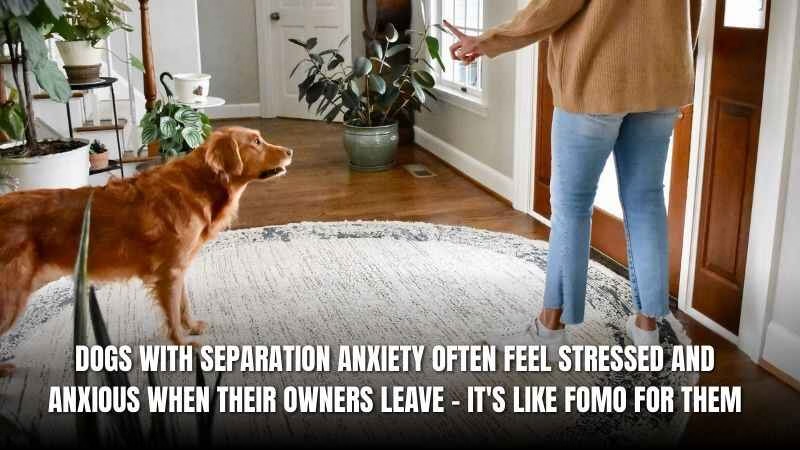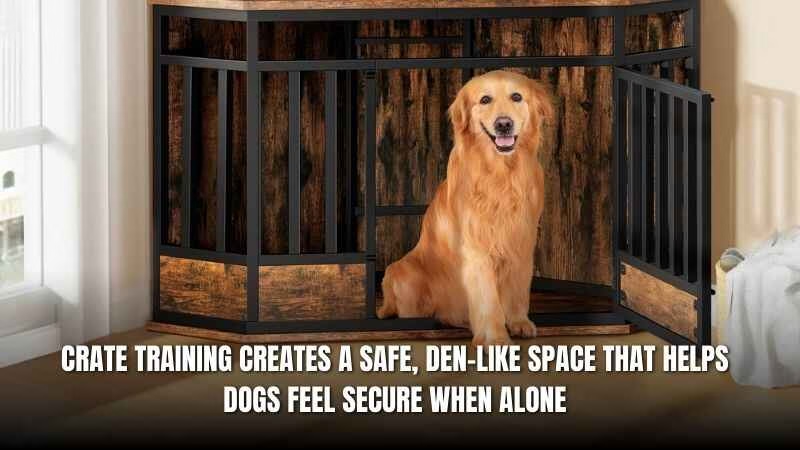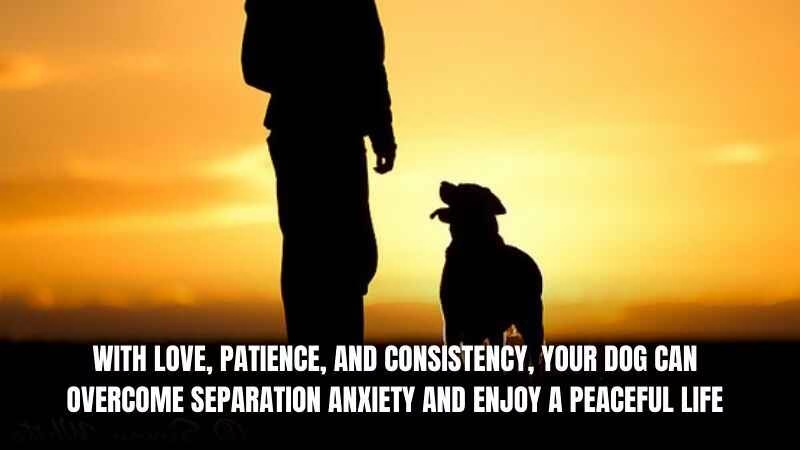Table of Contents
Taking a dog home can be an exciting moment in the lives of the humans. Playing, running, and cuddling with a furry ball of joy are among the most gratifying moments for any person. But much like one’s mental health needs to be taken care of, the mental health of a dog should also be taken care of. We tend to ignore such mental health issues in canines that bring about stress and anxiety. Separation anxiety forms one of the common anxieties that a dog suffers from.
Separation anxiety is a common occurrence amongst dogs, and if it is left untreated appropriately, it can prove to be a highly disruptive factor to the behavioral aspect of a dog’s life. Patiently treating your dog with love, it shall eventually be well, and they will go back to living life fairly normally. In today’s blogs, we will learn what separation anxiety is, why dogs undergo separation anxiety, and how to counter it.
What Is Separation Anxiety in Dogs?
The condition of separation anxiety is medically accepted as a behavioral disorder in which the dog experiences an unusual degree of panic when separated from his owner or pack. The dog starts barking and whining; at times, it turns destructive.
Common signs include:
- Continuous barking and howling
- Destructive behaviors
- Excessive panting and pacing
- Trying to escape confinement
What Causes Separation Anxiety?

Being social in nature, there are instances where dogs, when kept alone, may give away signs and symptoms of separation anxiety. Some breeds of dogs are genetically predisposed toward anxiety, which is sometimes brought about by a traumatic experience in negative fashions or the interruption of an otherwise normal daily life.
Some common reasons behind separation anxiety are:
- Change in the environment or moving to a new house or place
- Past experience of being abandoned
- Owner leaving for work suddenly on a regular basis
- Change in lifestyle
How to Help a Dog with Separation Anxiety
Dogs dealing with major separation anxiety should be taught how to deal with stress in a controlled manner. This involves creating a safe and structured environment.
Some steps which can help your dog deal with separation anxiety are:
1. Create a Positive Association with Alone Time
Creating a positive association with being alone is very crucial for a dog who is dealing with separation anxiety.
Here are a few steps which may help your dog to cope with stress:
- Use Kong toys: Stuff treats inside the puzzle toy and let the dog try to figure out how to take it out. This is a great mental stimulation game that will keep their mind busy, and they will be distracted from the fact that they are alone.
- Short time departure: When the dog is busy with toys, try to leave the room for a minute or two.
- Departure and arrival are not a big deal: When you leave the house or return home, don’t give any attention to the dog immediately. Ten minutes before leaving and after returning home, the dog should get attention. When you make your departure a big deal, the dog already starts panicking even before you leave. This results in anticipatory anxiety where the dog already anticipates that something is about to happen (you will be leaving) and gets into a panic state. When you return home, it shouldn’t be rewarding either, because if the dog sees you coming as a reward, then he will keep waiting all those hours when you are apart, which will result in the dog not being able to be calm alone.
Desensitization work takes time, consistency, and lots of patience. Separation anxiety is curable.
2. Establish a Calm, Predictable Routine
Dogs thrive on proper routine, structure, and boundaries. Try to create a predictable routine in your dog’s life which will help the dog understand what to expect in day-to-day life. Create proper timing for feeding, walking, playing, and proper bedtime. This will create a balanced life for your dog and will reduce anxiety overall.
If you have a job that has unpredictable timing or you have to stay out of your house for a long duration, then try to hire a dog walker or a caretaker to take care of your dog to avoid long-duration isolation.
3. Provide a Safe Space

Build your dog a place to enjoy safety and comfort. A dog crate, if used appropriately, can be highly beneficial. A crate is much like a den for the dog and can help them feel safe and comfortable during stressful situations. It should never be used improperly, or worse, as a form of punishment.
Give the dog chew toys, so that they have something to chew when bored. Such a place also offers a sense of security, lessening doggie apprehension.
4. Practice Confidence-Building Activities
Mental enrichment games and confidence-building exercises encourage the dog to use cognitive thinking and deal with mild stress in a healthy way. These games and exercises encourage mental stimulation and independence.

- Nose work: Games like scatter feeding, where you toss treats on a field or on the floor for the dog to search, are a great way to make them use their nose.
- Basic obedience: Basic obedience training is very important to teach any dog. It creates clarity, and it’s a great mental enrichment exercise for the dog as it helps the dog think of the behaviors he has to do or control his impulses.
- Treat dispensers: Treat dispenser toys are great mental enrichment games that keep the dog busy and are self-rewarding.
- Exposure to different environments: Giving your dog exposure to a new environment in a controlled manner will gradually help the dog boost its confidence, reduce boredom, and burn off excessive energy.
5. Avoid Punishment
If your dog is having any form of anxiety or is dealing with separation anxiety, you need to understand that the dog is helpless and needs your help to make him understand what we expect from him. Never punish your dog for being anxious or making poor choices in life. This will create a negative association in your dog’s life and may lead to further behavioral problems in life.
When to Seek Professional Help
Some separation anxiety is mild and can be fixed by following the steps provided above. In certain instances, it can get severe needing professional intervention. If your dog proves too destructive or gets injured in the process of escaping in your absence, then that could be the right time to consult a certified professional dog trainer to help both you and your dog understand and address the issues effectively. With the correct approach, even severe separation anxiety can be reduced effectively.
Final Thoughts

It can be emotionally draining and mentally challenging for you and your dog when the dog is suffering from separation anxiety. But with proper training, the correct approach, and consistency, you can actually help your furry friend feel much better in life and overcome anxiety.
Good results take time. Celebrate small wins together. Cheer your dog even for the smallest positive changes that he shows in his behavior. There may be setbacks sometimes and failures too, but stay patient and consistent, and your hard work will be fruitful.
Also Check: 7 Proven Techniques to Potty Train Your Puppy Fast (Even If You’re a First-Time Owner)


4 thoughts on “Separation Anxiety in Dogs: 5 Ways to Help Your Dog Feel Safe Alone”